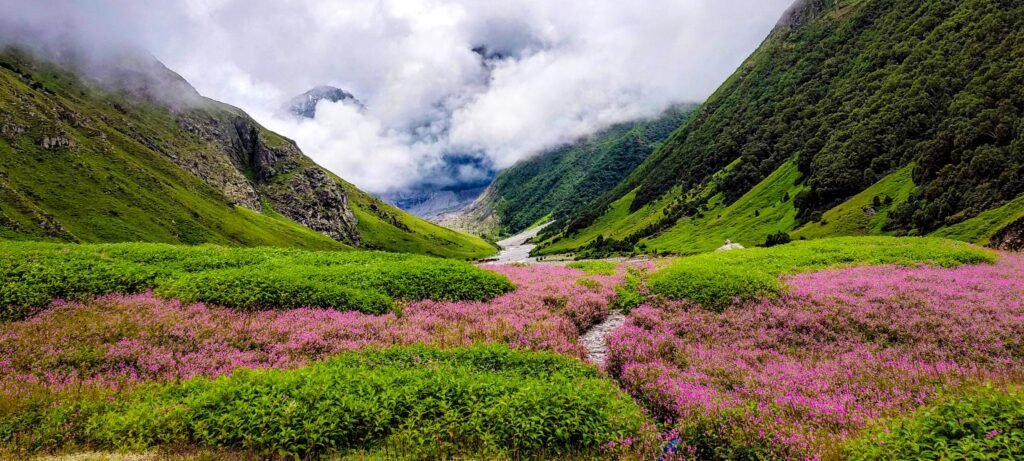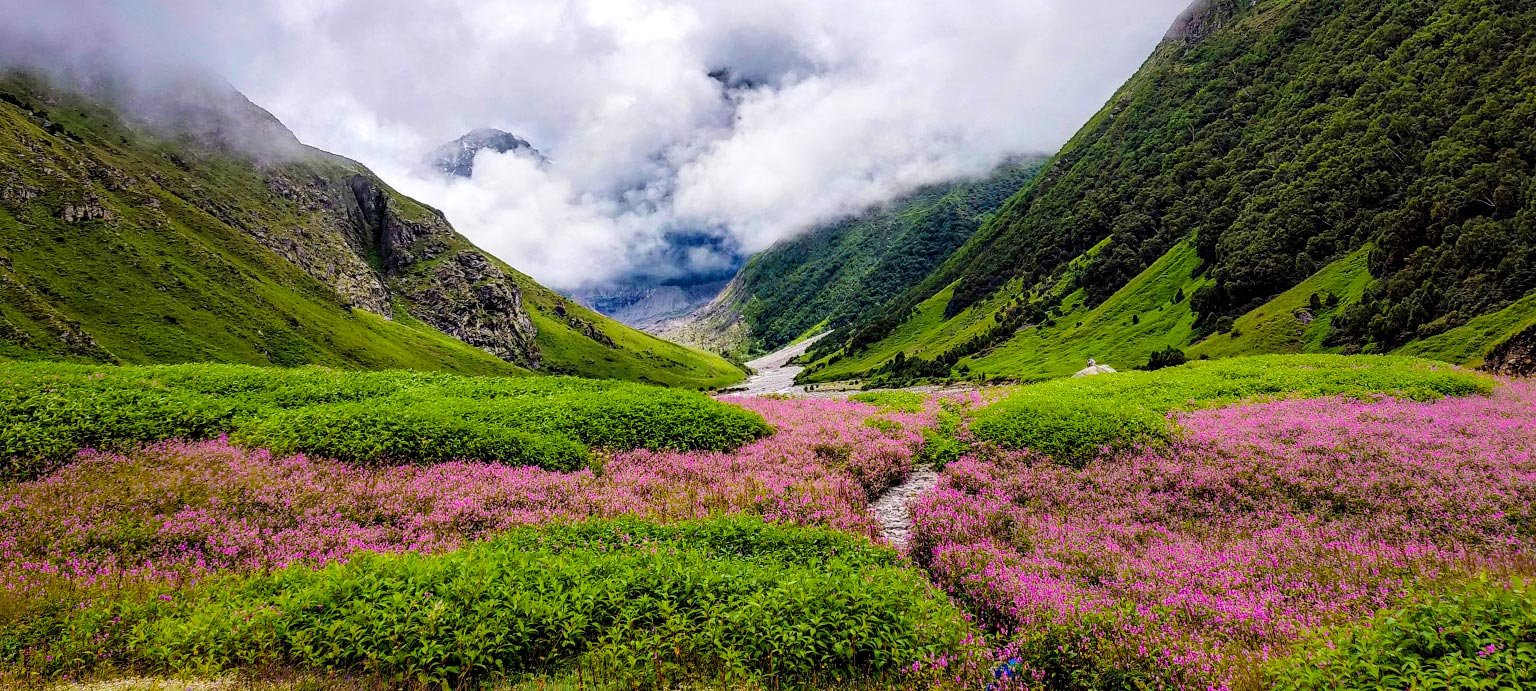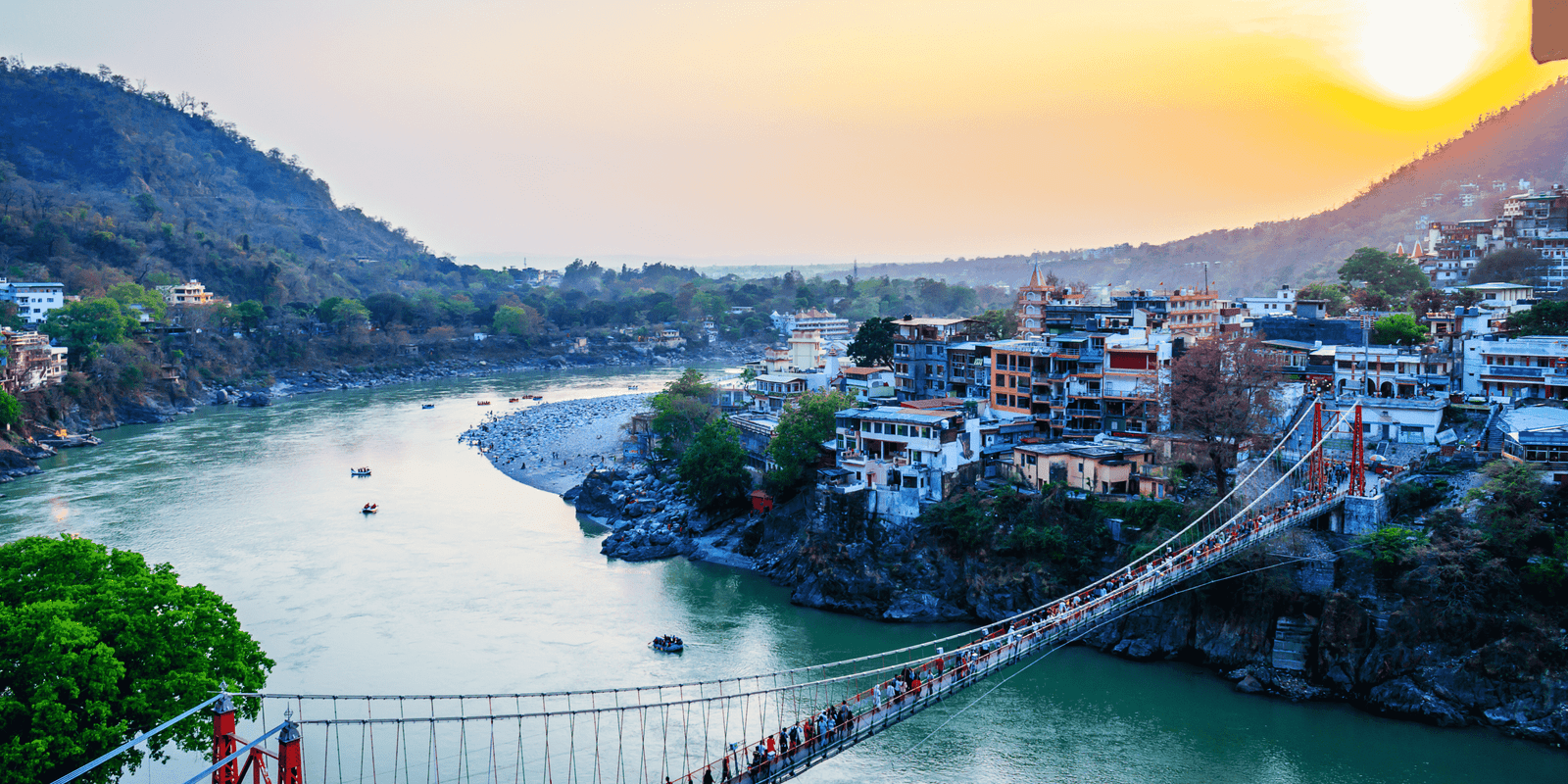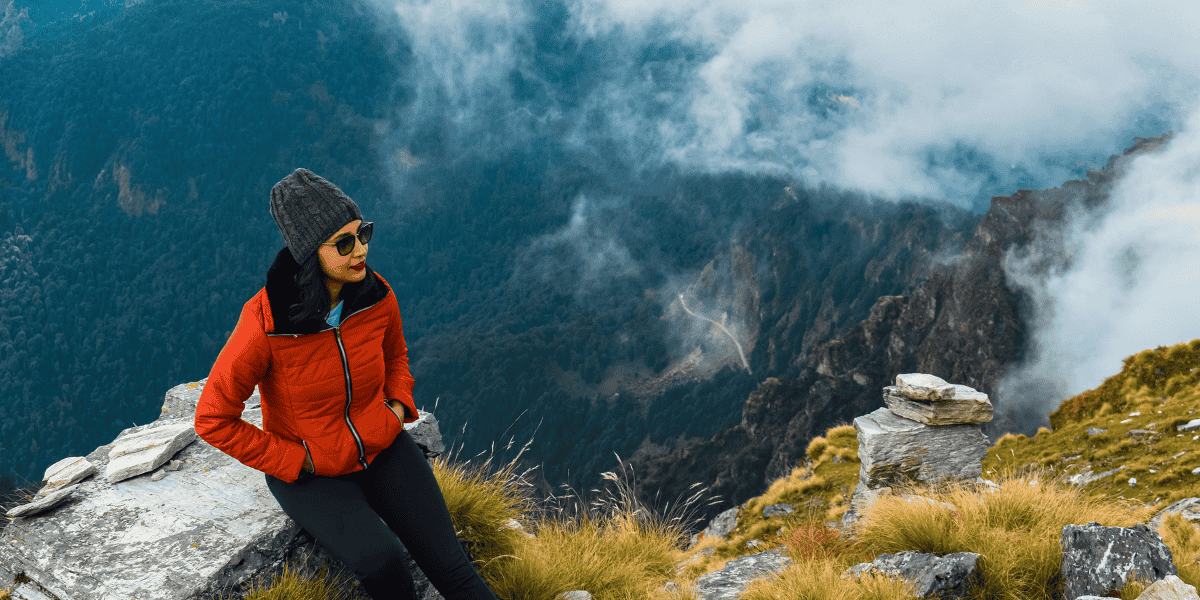
Introduction to the Valley of Flowers
Nestled in the state of Uttarakhand, India, the Valley of Flowers is a breathtaking UNESCO World Heritage Site renowned for its vivid floral landscape. Spanning approximately 87.50 square kilometers, this stunning valley captivates visitors with its picturesque scenery and remarkable biodiversity. As you venture through this natural wonder, you will find a kaleidoscope of alpine flowers that transform the landscape into a vivid tapestry of colors. Each year, from late June to early September, the valley’s meadows come alive with a diverse array of blooms, making it an iconic destination for botanists and nature enthusiasts alike.
The Valley of Flowers is not just a feast for the eyes but also a haven for an astounding variety of flora and fauna. More than 600 species of plants can be found here, including rare and endangered species. The valley’s unique ecosystem supports an impressive range of wildlife, featuring animals such as the Asiatic black bear, snow leopard, musk deer, and numerous species of butterflies and birds.
For botanists, the valley offers an unparalleled opportunity to study and appreciate a wide assortment of plant species in their natural habitat. For nature lovers, the sheer beauty and tranquility of the valley provide an unforgettable experience, one that leaves a lasting impression. The Valley of Flowers is more than just a trek – it is an exploration into a stunning natural world that brings together the best of what nature has to offer.
This exceptional site holds significant value not only for its ecological diversity but also for its cultural and spiritual importance, often referred to as the abode of fairies by the locals. The valley’s pristine beauty and serene environment make it a perfect escape from the hustle and bustle of daily life, offering a retreat into nature’s lap that rejuvenates and inspires.
The Valley of Flowers, nestled in the Chamoli district of Uttarakhand, India, holds a remarkable historical and mythological significance. Its introduction to the modern world happened serendipitously in 1931, when British mountaineer Frank S. Smythe stumbled upon this pristine paradise while returning from a successful expedition to Mount Kamet. Captivated by its breathtaking alpine flora, he documented his findings meticulously. Smythe’s vivid descriptions and the subsequent publication of his book, “The Valley of Flowers,” played a crucial role in drawing global attention to this ethereal location, propelling it onto the must-visit list for nature enthusiasts and explorers alike.
Beyond Frank S. Smythe’s discovery, the Valley of Flowers has profound resonance in Hindu mythology and local folklore. According to the legends, the valley is endowed with a strong spiritual aura, having been graced by the presence of Lord Hanuman. In the epic Ramayana, it is said that Hanuman visited the valley while searching for the Sanjeevani Booti, a potent herb needed to save Lord Lakshman’s life during the battle of Lanka. This mythological association enhances the valley’s mystical charm, rendering it not just a feast for the senses but also a place of profound cultural reverence.
Moreover, the region is dotted with tales and beliefs embedded in Vedic traditions, adding layers to its historical tapestry. Local folklore suggests that the Valley of Flowers was originally known as ‘Nandan Kanan,’ a divine garden the gods themselves tended. The celestial beauty of the valley is thus intertwined with spiritual narratives, where every bloom and stream holds a story of divine intervention and ancient reverence.
Thus, the Valley of Flowers is more than just a visual spectacle. Its historical discovery and deep-rooted mythological connections make it an evocative destination, inviting one to experience the harmony between nature and spirituality—a place where history whispers through the winds and mythology blooms in every flower.
Best Time to Visit the Valley of Flowers
The Valley of Flowers, nestled in the heart of the Indian Himalayas, is a spectacular destination known for its vibrant flora and breathtaking landscapes. Understanding the best time to visit is crucial for travelers aiming to experience this natural wonder in its full glory. The valley is accessible from June to October, with each month offering unique experiences.
June marks the beginning of the trekking season as the snow begins to melt, revealing the lush landscape. During this time, the valley starts to come to life with the initial bloom of flowers. Temperatures range from 15°C to 20°C during the day, dropping to around 7°C to 10°C at night. The climate is relatively mild, making it an excellent time for trekking and witnessing the rejuvenation of nature.
July and August are considered the peak blooming seasons in the Valley of Flowers. This period sees the valley adorned with an array of colorful flowers, including endemic species not found elsewhere. The temperatures remain moderate, typically between 18°C and 22°C during the day and around 10°C at night. The monsoon rains, although light, enhance the vibrancy of the surroundings, presenting a lush, green landscape interspersed with a vivid floral spectrum. However, visitors should be prepared for occasional rains and muddy trails.
September brings a slight change in scenery as the blooming season begins to wane, but it is still a favorable month for visiting. The weather remains relatively stable with daytime temperatures between 15°C and 20°C. As autumn approaches, the valley gradually transforms, exhibiting a different palette with hues of late-blooming flowers and the early onset of fall colors. This makes September an appealing time for those interested in both florals and foliage.
By October, the valley starts preparing for winter, and trekking becomes challenging as temperatures drop to around 5°C to 10°C during the day and can go below freezing at night. The valley remains open for those seeking a quieter experience before it closes for the season. Although the floral display is not as intense, the serene environment and the changing colors of the foliage provide a peaceful retreat for trekkers.
In summary, the best time to visit the Valley of Flowers largely depends on what visitors wish to experience. Whether it’s the initial bloom, the peak floral display, or the tranquil transition to autumn, each part of the trekking season offers something unique in this Himalayan paradise.
Trek Itinerary and Preparations
Embarking on the Valley of Flowers trek is a journey that unfolds over several beautiful stages, each offering its unique charm and challenge. The trek typically initiates from Govindghat, which is at an altitude of approximately 1,828 meters (6,000 feet). Trekkers often reach Govindghat by road from major nearby cities like Rishikesh or Haridwar, which are well connected through public and private transport.
The first leg of the trek commences from Govindghat to Ghangaria, covering a distance of about 14 kilometers (8.7 miles). This path involves ascending to an elevation of 3,048 meters (10,000 feet), demanding a moderate level of fitness. The trail is well-marked, catering to both novice and experienced trekkers. It generally takes around 6-7 hours to reach Ghangaria, where trekkers usually spend the night. This village serves as a base camp for both the Valley of Flowers and Hemkund Sahib treks.
The next day is dedicated to exploring the Valley of Flowers, which lies about 3 kilometers (1.9 miles) from Ghangaria. The ascent here is gradual, reaching an elevation of approximately 3,658 meters (12,000 feet). Depending on one’s pace, the excursion can take 2-3 hours. The valley offers an ethereal experience with its diverse flora, stunning vistas, and the serene Pushpawati River. It’s advised to carry sufficient water, snacks, and a camera to capture the mesmerizing landscapes.
Physical preparation is crucial for this trek. Trekkers should engage in regular cardiovascular and strength training exercises at least a month before the expedition. Activities like brisk walking, jogging, and stair climbing can significantly enhance endurance. Additionally, breathing exercises and yoga help in acclimatizing to high altitudes.
Essential gear includes sturdy trekking boots, thermal wear, waterproof jackets, and a reliable backpack. It’s also important to carry trekking poles, a first-aid kit, and sufficient layers of clothing to manage sudden weather changes. Permits are mandatory and can be obtained from the Forest Department’s office in Ghangaria. Ensure all necessary documents like identification proofs are in order to avoid any last-minute hassles.
Meticulous planning and proper preparation can transform the Valley of Flowers trek into an enriching and unforgettable adventure, resonating with nature’s untouched beauty and tranquility.
Flora and Fauna of the Valley
Nestled in the Western Himalayas, the Valley of Flowers National Park is a UNESCO World Heritage Site renowned for its breathtaking diversity of flora and fauna. The lush expanse is a botanical haven featuring over 500 species of plants. Among these, key plant species like Brahma Kamal, Blue Poppy, and Cobra Lily stand out for their beauty and rarity. The Brahma Kamal (Saussurea obvallata), often regarded as the “King of Himalayan Flowers,” thrives in this mystical valley, blooming at night to reveal its white petals. The Blue Poppy (Meconopsis betonicifolia), characterized by its vivid blue petals, adds a mesmerizing splash of color to the landscape. Equally captivating is the Cobra Lily (Arisaema tortuosum), which gets its name from its striking resemblance to a cobra poised to strike.
The fauna is just as impressive, with the Valley of Flowers being home to several significant wildlife species. Bird watchers flock to the region to catch glimpses of the Himalayan Monal, the state bird of Uttarakhand, known for its iridescent plumage and distinctive crest. Small mammals like the Pika and Himalayan Weasel are commonly sighted, scurrying among the rocks and foliage. Predatory species such as the Asiatic Black Bear and the elusive Snow Leopard add to the valley’s allure, although sightings of these mammals are rare. This delicate ecosystem supports a myriad of other species, which collectively contribute to the valley’s biodiversity.
Conservation efforts in the Valley of Flowers are robust, aimed at preserving its unique ecological heritage. The region has benefited from stringent regulations, enforced by the Uttarakhand State Forest Department and supported by various non-governmental organizations. These initiatives focus on habitat conservation, anti-poaching activities, and community awareness programs. Their collective efforts have made significant strides in maintaining the valley’s pristine environment, ensuring that this natural wonder continues to flourish for generations to come.
The Valley of Flowers trek not only offers breathtaking vistas but also provides a delightful culinary experience featuring the traditional dishes of Uttarakhand. Trekkers embarking on this journey have the opportunity to savor some unique flavors indigenous to this region, which are rich in both taste and culture.
Traditional Dishes of Uttarakhand
One of the must-try dishes is Aloo Ke Gutke, a simple yet flavorful preparation of potatoes sautéed with mustard seeds, turmeric, and coriander. It is often served with local bread known as roti or puri. Another traditional delicacy is Kafuli, a nutritious dish made with spinach and fenugreek leaves cooked in a comforting blend of spices, often enjoyed with rice. For those with a preference for lentil preparations, Chainsoo is an excellent choice—a hearty dish made from ground black gram dal roasted to perfection.
No visit to Uttarakhand is complete without tasting Bal Mithai, a popular sweet made from roasted khoya coated with sugar balls, offering a delightful end to a satisfying meal. This dessert is highly cherished among locals and visitors alike.
Food Available Along the Trek Route
As trekkers traverse through the Valley of Flowers, they will find various dhabas (roadside eateries) and lodges offering a mix of staple foods, snacks, and beverages. Common staples include dal, chawal (rice), and roti. These simple, hearty meals provide the necessary energy for the trek. For snacks, one might find an array of pakoras (deep-fried fritters) and namkeens, which are perfect for a quick bite.
Beverages such as herbal teas made from local plants are a refreshing treat, especially after a long day of trekking. The tea, often brewed with mint, lemon, or even jaggery, serves as a rejuvenating drink amidst the cool mountain air. Dining in local dhabas and lodges not only offers a taste of local flavors but also adds to the cultural immersion, making the trek an even more enriching experience.
When planning your trek to the Valley of Flowers, it’s essential to consider the range of accommodation options available, catering to different preferences and budget levels. The journey often begins at Govindghat, where you will find a variety of hotels that offer a more comfortable stay with amenities such as hot water, room service, and in-house dining. Hotels here vary from budget to mid-range, ensuring a restful night before embarking on your trek.
As you move closer to the Valley of Flowers, Ghangaria is the primary base for trekkers. Accommodations in Ghangaria primarily consist of basic lodges and guesthouses. These establishments provide essential amenities like clean rooms, bedding, and simple meals. The offerings are tailored to meet the needs of trekkers looking for a place to rest after a day’s hike. Some guesthouses may offer higher-end rooms with better facilities, but these are limited and can be more expensive. It is recommended to book these lodges in advance, especially during peak trekking season, to secure a spot.
For those seeking a more adventurous experience, camping is a viable option. Several areas around Ghangaria permit camping, either in organized campsites or through independent arrangements. Campers can expect basic but adequate facilities such as tents, sleeping bags, and occasionally, pre-arranged meals. This option is ideal for those who wish to immerse themselves fully in the natural beauty of the region. Ensure that the necessary permits for camping are obtained beforehand, and come prepared with appropriate gear to handle the mountain weather.
Booking accommodation early is prudent, as the Valley of Flowers Trek is a popular destination, particularly during its peak season from July to September. Prices vary widely, with basic lodges starting at around INR 500 per night, while more comfortable hotels in Govindghat and Joshimath may range between INR 1500 to INR 4000 per night, depending on the amenities and time of booking. It’s advisable to research thoroughly and, if possible, book through reputable travel agencies or online platforms that provide reviews and ratings from fellow trekkers. Doing so will help ensure you find a suitable and comfortable place to stay, making your trek to the Valley of Flowers a smooth and pleasant experience.
Travel Tips and Safety Precautions
Embarking on the Valley of Flowers trek requires thorough preparation and an understanding of potential challenges. The trek is both physically demanding and remarkably rewarding, but with the right strategies, it can be a safe and enjoyable experience. Below are vital travel tips and safety precautions to consider:
Firstly, altitude sickness is a common concern when trekking to higher elevations. It is essential to acclimatize adequately by spending a day or two at moderate altitudes before ascending further. Drink plenty of water, avoid alcohol, and consider carrying medications such as Acetazolamide after consulting a healthcare professional. If symptoms such as headaches, dizziness, or nausea persist, descend immediately and seek medical attention.
Maintaining open lines of communication is critical for safety. Always inform someone about your trek itinerary and expected return date. Carry a mobile phone with emergency contact numbers for the local authorities and trek operators. It’s also beneficial to use a GPS device or a trekking mapping application for real-time navigation. Remember, ensuring constant connectivity is a safeguard against unexpected situations.
Packing light, yet effectively, is another key consideration. Prioritize essential items such as layered clothing for fluctuating weather, waterproof gear, sturdy trekking boots, and a first-aid kit. Avoid overpacking to reduce strain and increase mobility. Respecting local culture is also paramount—dress modestly, seek permission before taking photographs of locals, and practice basic phrases in the regional language as a gesture of goodwill.
Equally important is the principle of ‘Leave No Trace.’ Carry out all litter and avoid disturbing the natural environment. This sustainable practice not only preserves the beauty of the Valley of Flowers but also fosters respect for nature among fellow trekkers.
Preparing for unpredictable weather and rugged terrain is indispensable. The weather can change rapidly, so always check forecasts before setting out. Pack accordingly, and be prepared for rain, cold, and intense sunlight. Understand the trail’s difficulty and condition; knowing when to turn back can prevent accidents.
By taking these travel tips and safety precautions to heart, trekkers can ensure a safer and more fulfilling journey through the breathtaking Valley of Flowers.



